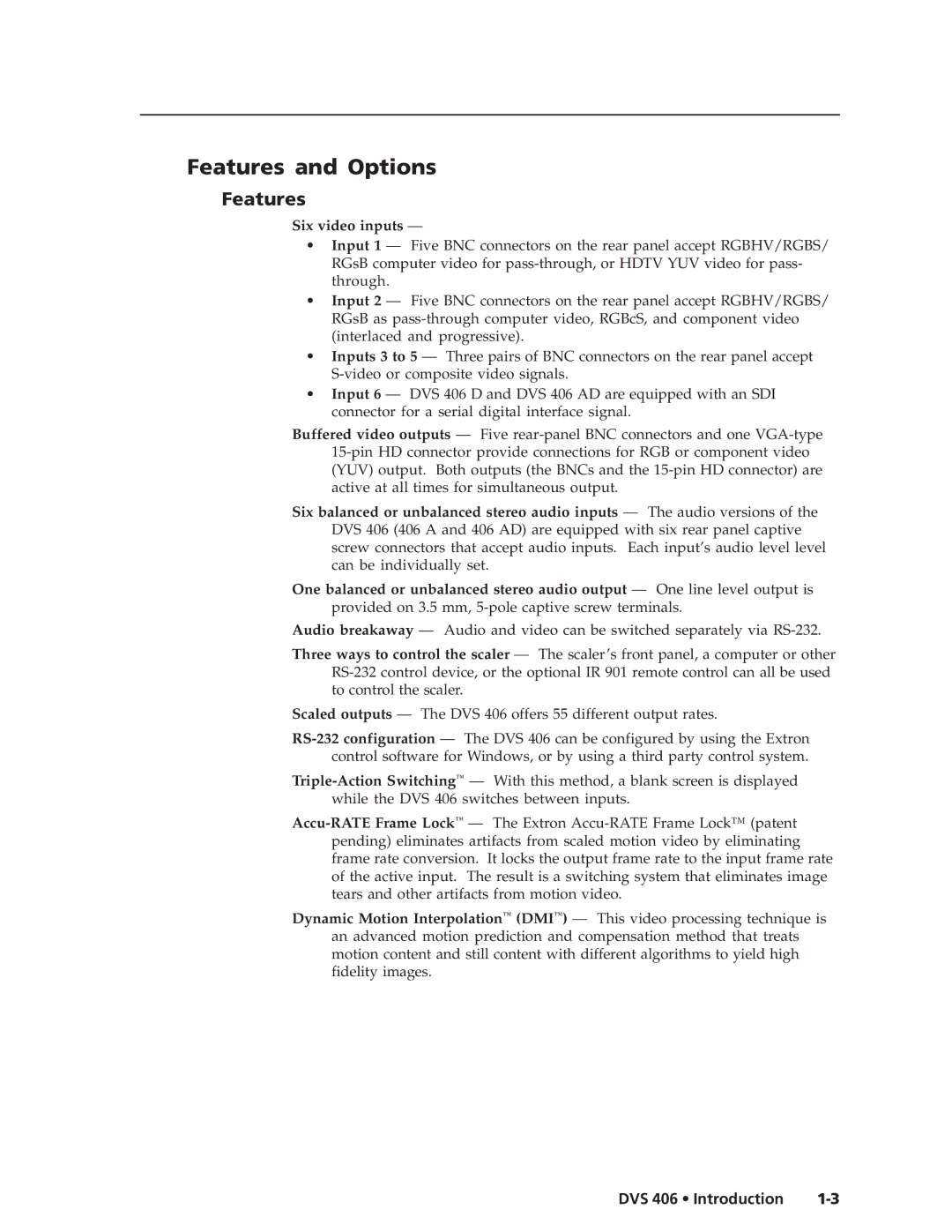Features and Options
Features
Six video inputs —
•Input 1 — Five BNC connectors on the rear panel accept RGBHV/RGBS/ RGsB computer video for
•Input 2 — Five BNC connectors on the rear panel accept RGBHV/RGBS/ RGsB as
•Inputs 3 to 5 — Three pairs of BNC connectors on the rear panel accept
•Input 6 — DVS 406 D and DVS 406 AD are equipped with an SDI connector for a serial digital interface signal.
Buffered video outputs — Five
Six balanced or unbalanced stereo audio inputs — The audio versions of the DVS 406 (406 A and 406 AD) are equipped with six rear panel captive screw connectors that accept audio inputs. Each input’s audio level level can be individually set.
One balanced or unbalanced stereo audio output — One line level output is provided on 3.5 mm,
Audio breakaway — Audio and video can be switched separately via
Three ways to control the scaler — The scaler’s front panel, a computer or other
Scaled outputs — The DVS 406 offers 55 different output rates.
Dynamic Motion Interpolation™ (DMI™) — This video processing technique is an advanced motion prediction and compensation method that treats motion content and still content with different algorithms to yield high fidelity images.
DVS 406 • Introduction |
